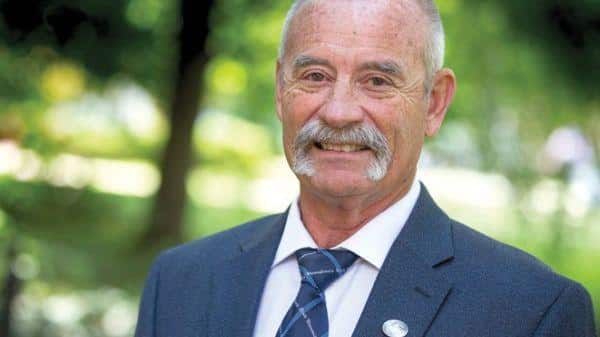UNIVERSITY PARK, Pa. — Steven Loerch’s first real payday came from Penn State. Just like his last. Between the two, the College of Agricultural Sciences alumnus has forged an illustrious career as an animal scientist, teacher, extension specialist and administrator spanning more than four decades.
Loerch reflected on his experiences as he neared retirement as Senior Associate Dean of the College of Agricultural Sciences, effective Dec. 31.
As a 17-year-old high school student in 1971, the Lemont native, who grew up on the lower slopes of Mount Nittany, earned money as a part-time lab assistant in what was then known as the Pesticide Research Lab, working for Ralph Mumma, Distinguished Professor Emeritus of the College of Agricultural Sciences entomology service.
“It really gave me my foundation for understanding the research process,” Loerch said. “It was a great experience for me when I moved into animal science work with four-legged animals instead of six-legged ones. Ralph Mumma and my undergraduate advisor, Erskine Cash, have been instrumental in my career development.
After earning a degree in animal industries from Penn State in 1977, Loerch headed to the Midwest, at Cash’s suggestion, to earn a master’s and doctorate in ruminant nutrition from the University of Illinois. In 1981, he joined the faculty at The Ohio State University, where he spent the next 33 years as a professor of beef cattle nutrition, conducting research, teaching undergraduate students, mentoring graduate students and delivering extension programs.
“The main focus of my research was the regulation of feed intake by ruminants to maximize their efficiency and improve their profitability by reducing production costs,” he said. “I developed what we call a prescription intake program, where the producer or nutritionist decides how much the animal should eat each day, instead of letting the animal do it on its own instinct. . I have degrees from two respected universities, and I like to say I’m smarter than an Angus steer, and I think I know better what he should eat than him.
Loerch has also focused on the nutrition of beef cattle as they transition from the pastures where they were raised to feedlots, where they are mixed with many other cattle from different sources before processing.
“I use this analogy with my wife’s career as an elementary school teacher,” he explained. “Children are brought up in their own family unit. They are outdoors a lot. And then on the first day of school, we send them to this educational feedlot, and they all sit next to each other so they can pass their viruses and bacteria through this educational containment system.
“And the exact same thing happens in a confined feedlot. Shortly after the animals arrive there, they will go through an attack of respiratory disease. I had a major research program on ways to alleviate these health issues through nutrition and management.
A third line of Loerch research examined the use of by-products in animal feed. He noted that this work has enabled the beef industry to reuse a significant amount of by-products from food processing and other industries to maximize their nutritional value.
In addition to generating more than 140 publications in peer-reviewed journals and approximately $3 million in grants, Loerch’s research has earned him numerous accolades. His research honors included the American Society of Animal Science Ruminant Nutrition Research Award, Society Research Award, and multiple awards from the Ohio State College of Food, Agricultural, and Environmental Sciences.
